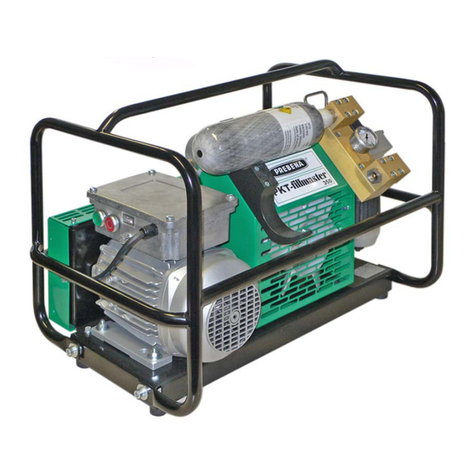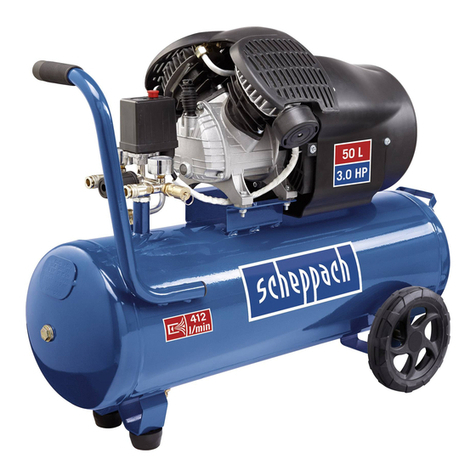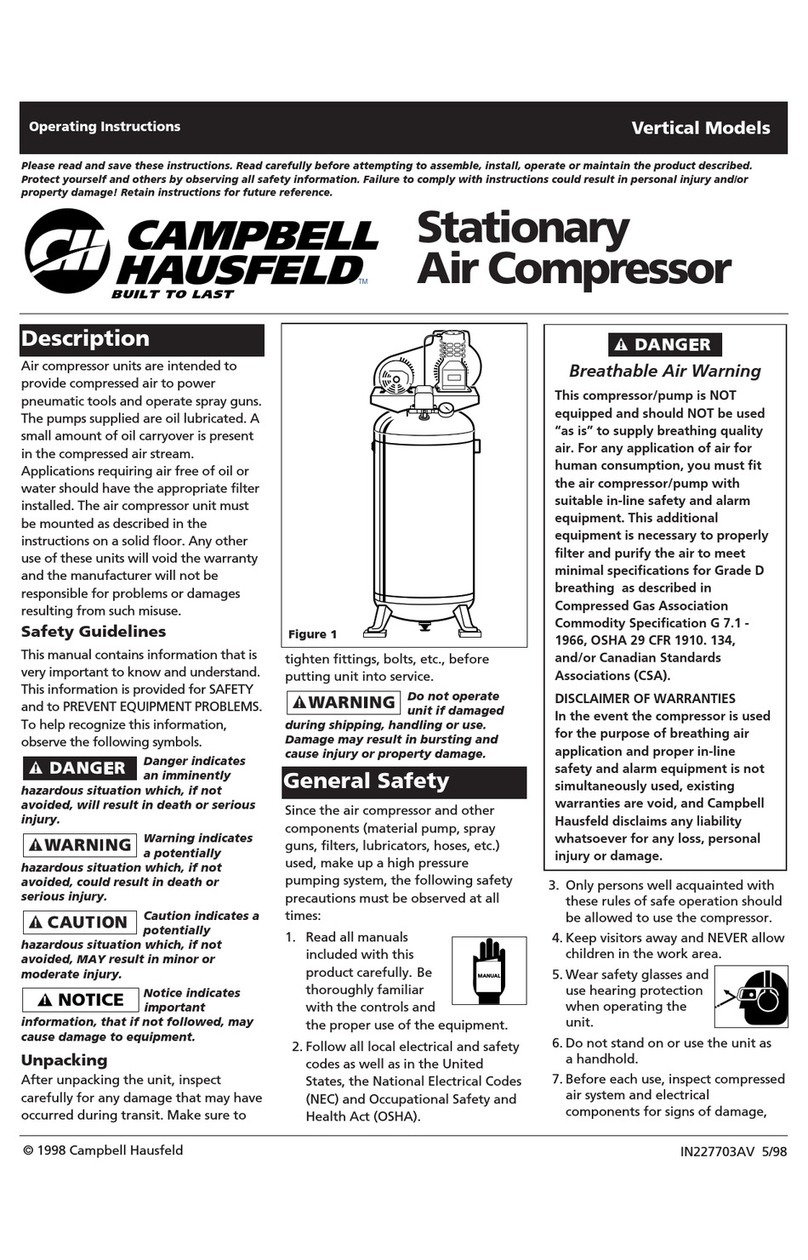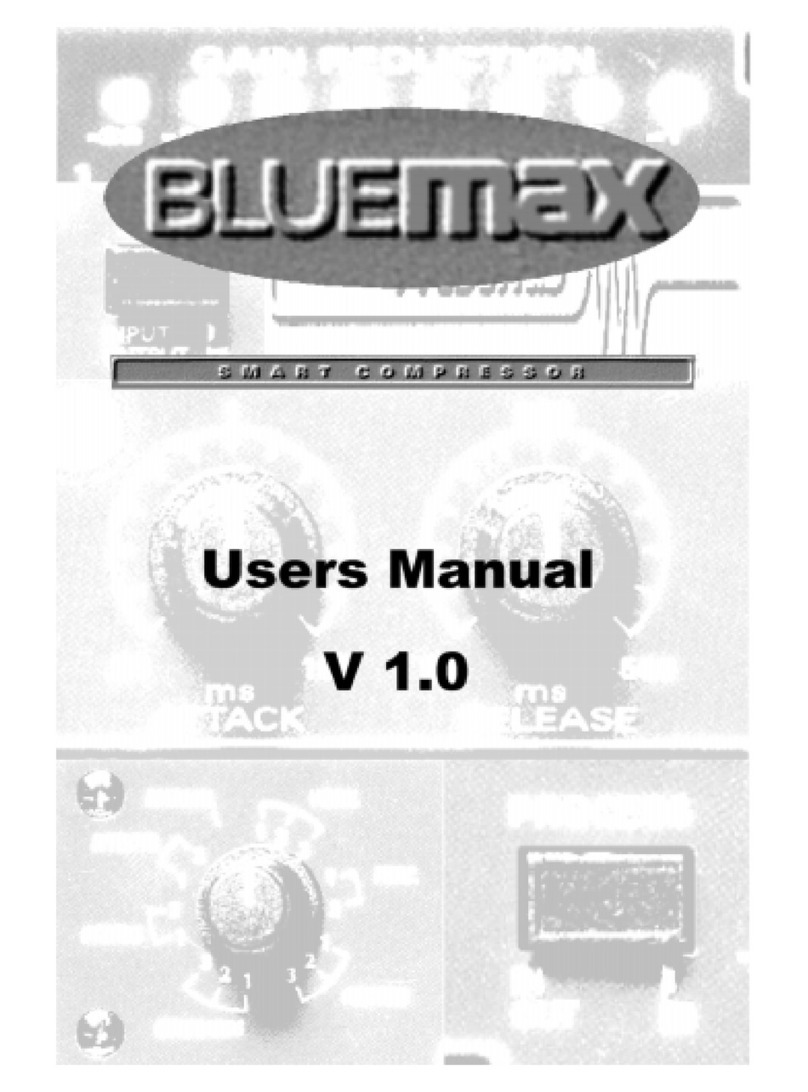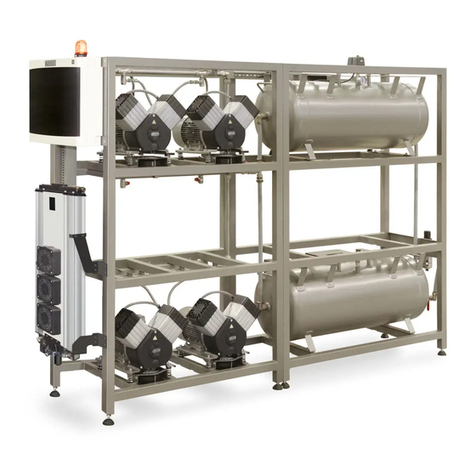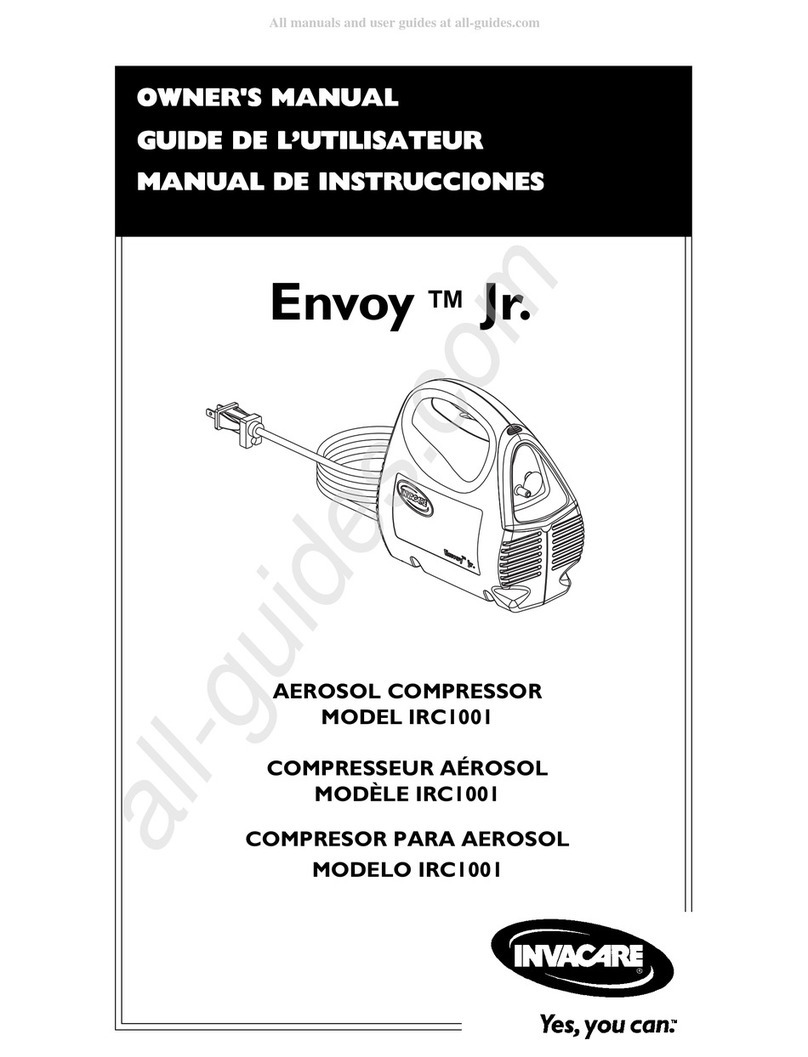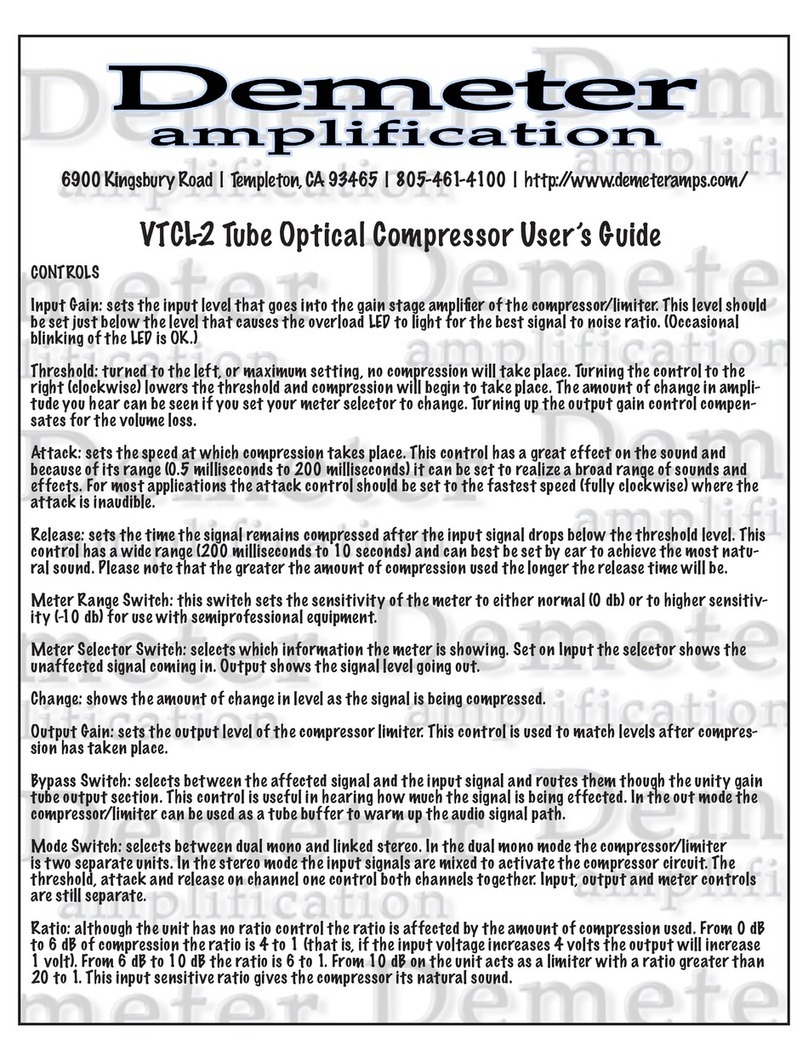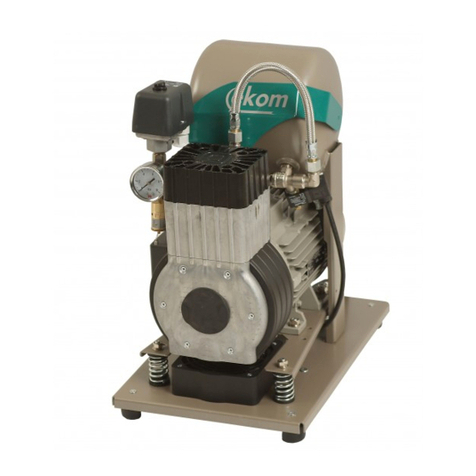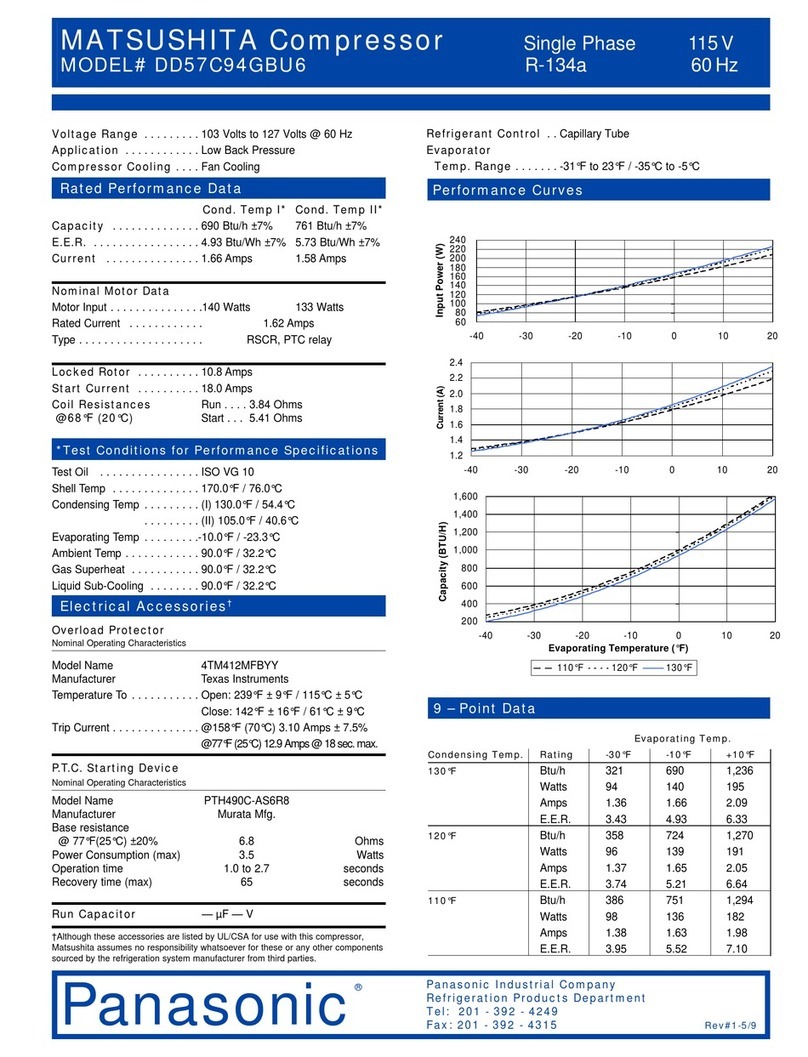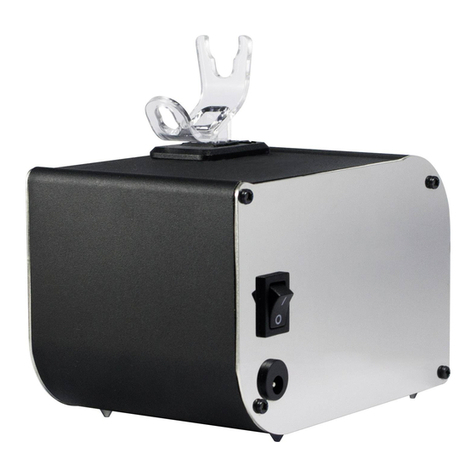GA 12.107/5.02 - 12/97
Installation
7
2Installation
2.1 Safety Information
The owner/operator shall ensure that the compressor
units are operated only by persons who have been
instructed in their use and that they are serviced only by
qualified technicians; refer also to the Accident Preven-
tion Regulations for compressors (VBG 16), sections 12
rule 17, mounting and operation information.
Warning The compressor unit and the flexlines are
filled with helium at pressures of up to 16
bar (232 psig) when stopped and of up to
22 bar (319 psig) during operation.
The components in the compressor units
(e.g. compressor capsule, heat exchanger,
piping, separators and adsorber) are under
pressure, as are the flexlines;they shall not
be worked either mechanically or thermally.
The safety pressure relief, bypass and non-
return valves in the compressor unit shall
not be blocked or modified.
The maximum permissible operating pressure for the
flexlines and the helium filling adapter when the self-
sealing couplings are coupled is 28 bar (406 psig).
Do not lay flexlines across corridors or passageways –
danger of physical damage and corrosion!
Observe minimum bending radius of 20 cm (8“) – danger
of kinking!
Never damage flexlines with pointed or sharp objects!
Never attempt to make repairs to flexlines!
Never install flexlines which show signs of damage!
When running the compressor unit, provide protective
caps at all self-sealing couplings which are not required
for operation.
Attach or detach flexlines only with the compressor unit
switched off.Once flexlines have been detached, place
protective caps on the self-sealing couplings.
Even when switched off, the compressor unit and the
flexlines will be under pressure of up to 16 bar (232
psig).
Warning These compressor units shall not be used
in an environment subject to explosion
hazard.
Warning Potentially fatal voltages are present in the
compressor unit. Before beginning any
work on the unit, switch it off and isolate it
from the power supply network.
To avoid electrical shock, be sure to ground
the compressor unit and all attached de-
vices.
The electrical connection shall be made
only by a qualified and licensed electrician
in accordance with VDE standard 0105, in
compliance with the guidelines set forth in
VDE 0100, and observing local codes.
Warning The compressor capsule, heat exchanger
and piping will become so hot during opera-
tion, (> 80°C, 176°F) that there will be a
danger of burns.Before beginning any work
on the compressor, switch if off and allow it
to cool down.
